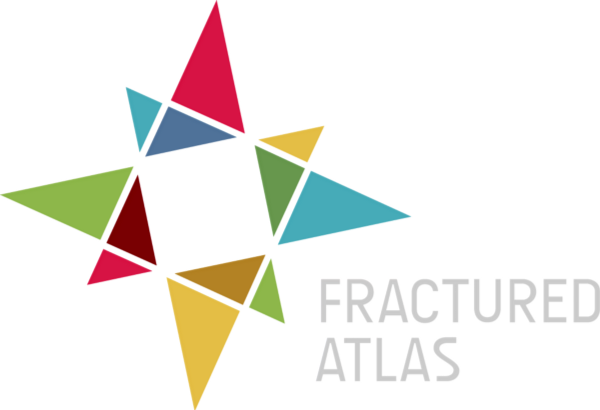What Documentary Filmmakers Need to Know About Fair Use, Part Two
by Courtney Duffy, Robert W. Deutsch Arts & Technology Policy Fellow at Fractured Atlas
Last month our Arts & Technology Policy Fellow, Courtney Duffy, continued her series on copyright challenges within different artistic disciplines by publishing part one of a segment on filmmaking. Below you’ll find part two. Connect with Courtney on Twitter @cduffy90 and join the conversation using #CopyrightwithCourtney.
Navigating the copyright waters is particularly challenging for documentary filmmakers. As Vivian Kleiman testified in my most recent post, filmmakers will do well to familiarize themselves with the Fair Use Doctrine to as great a degree as possible. I was lucky enough to get the take on these issues with Vivian’s colleague, Gretchen Stoeltje, as well as legal expert Jack Lerner.
Gretchen has a unique perspective in that she took a break from filmmaking between 2000 and 2013 — the period during which the Internet became a difference maker for filmmakers. For the past couple of years she has gotten back in the saddle, however, working on a film that is currently still in development.
The project, a documentary about Texas State Senator Wendy Davis who shot to national fame two years ago for filibustering Senate Bill 5, will include crowdsourced footage from those involved in the effort:
One of the film’s story lines is the massive public participation that made that event possible. The people who attended in person not only worked with lawmakers in the senate chamber to stall the vote on the bill, but they also shot a lot of video and stills and sent them out into the world via digital platforms where other people experienced the event through that material. I am hoping to use some of that footage to chronicle the event, showing the many perspectives of participants there that night.
The fact that just about anyone can document their own experiences and upload them directly both creates more transparency in news reporting and better enables people to hold governments, law enforcement, and mainstream press organizations accountable for their claims. In this sense, digital technologies can convey more truths and amplify the voices of more sources than analog channels can.
That said, Gretchen has conflicted feelings about the transformative role of the digital age on the creative process, doubling down on the importance of net neutrality in ensuring healthy competition within the filmmaking community:
The sea of content now available also means that the struggle to distinguish yourself becomes that much more difficult. As long as net neutrality prevails, independent filmmakers and distributors are technically and legally welcome to compete in this fray, self-distribute, promote, and sell directly to buyers. Without the access of net neutrality, however, this struggle for exposure will intensify. We will be back to seeking acquisition by a larger entity, trying to get picked up by whatever channels dominate internet programming and less able to sell easily and directly to consumers.
Gretchen also points out that the digital age can limit the value of filmmakers’ projects…
The ease with which we can access so much content from our couches has the effect of cheapening it for audiences. Consumers are so removed from the transaction of paying for content that it can feel free. The proliferation of high quality consumer technology and amateur video channels creates the illusion that it is cheap and easy to make films, and people expect to pay less for them than they used to, if at all. And though media librarians do understand the value of a professional documentary film, university budgets for media are shrinking, and librarians express frustration with the price of educational licenses.
Streamed Video on Demand is clearly the new model for media distribution, but whether it is a profitable business model for filmmakers is not a sure thing. I know independent filmmakers with very popular titles for whom selling streams through Netflix has served almost as advertising for more lucrative educational sales. They don’t consider it a replacement for that revenue, however, because the return on those stream sales is so small.
At the same time, there is still an expectation that independent filmmakers should work for free, that their colleagues should also donate their time, and that producers should leverage personal debt to finish a film. That model, though stressful, worked somewhat as long as filmmakers eventually recouped cost or profited from healthy film sales. However, it is not clear from this messy landscape of changing revenue streams and consumer valuation of content that filmmakers should still expect those kinds of sales.
…As well as the control they have over their work:
One of the downsides of digitally disseminated media is theft. Some of my colleagues have seen their work inexplicably offered for sale on Amazon. Others have seen their work listed in the collections of libraries to whom they had never made a sale. A friend from film school just reported that he saw one of his film school projects posted on YouTube by someone who’d found an analog copy in a dumpster.
We’ve also seen disputes in the educational market over the digital-era application of a much older licensing term that far pre-dated streaming. Public Performance Rights (PPR), required to publicly show films at events like student club gatherings, film series, and general lectures, have frequently been conveyed with educational licenses. Filmmakers have not understood them to convey the right to copy and upload files for distance learning purposes, but some institutions have. Whether or not to continue including PPR in an educational license is a question filmmakers are now asking themselves. Meanwhile buyers point out that without PPR, the price of a license should be lowered.
When it comes to advising fellow and aspiring filmmakers on adhering to fair use, Gretchen has some valuable advice:
What I am encountering more and more is the assumption that if something is on the Internet, it must be available for anyone to use. That may be so, but users need to know how and why they can use someone else’s work. What I usually say is: if you did not create the material in question or you are not the copyright owner, you may be able to use it, but you must know how and why. You either need to be able to articulate (and preferably have in writing from an attorney) your argument for a Fair Use exemption; show that it is in the public domain; acquire permission and a license from the owner; or show that it is covered in a pre-existing blanket agreement like an implied license or that you are using it under a Creative Commons license.
Gretchen’s checklist may seem daunting, but experts like Jack Lerner help filmmakers make sure that the footage they are using qualifies as fair use in a legal sense. Jack, a clinical law professor, is the director of the Intellectual Property, Arts, and Technology Clinic at University of California Irvine. His work focuses on the ways in which technology law and policy affect innovation and creative expression. “The documentary community is focused on free speech, saying ‘Hey, we’re doing this because we have a strong stake in the public interest and we want to expose wrongdoing and show how the world works,” he shared on a recent phone call. “They’re worried about how they can expose a big corporation’s wrongdoing without being sued into oblivion.” Jack echoed Gretchen’s observations of the industry change brought on by new technologies. “It’s a time of great change, much of which is driven by technology,” he said. “It goes both ways. The cost of making films has gone down, although it’s still very expensive. The wind is blowing in both directions.”
He has worked widely within the filmmaking and arts community at large, including the National Alliance for Media Arts + Culture (NAMAC) — an organization which held a policy boot camp for filmmakers last year. As a board member of the International Documentary Association, Jack testified before the Library of Congress last year on the issue of orphan works, which often sends filmmakers on something of a wild goose chase. “Sometimes filmmakers have to become their own gumshoe investigators just to try and license a film,” he told me. “For example, if you can’t find the owner of a clip because the film company’s gone out of business, you can try to find the director and ask who owns the rights to it.”
Jack has done a great deal of work both on net neutrality (“There are many small video websites that screen documentary films. Without net neutrality, they will be terribly burdened, forcing filmmakers to do business with Netflix and the big guys to get your film out there”), and on fair use (“One of the reasons documentary filmmaking has flourished so much,” he said, “is because we’ve figured out how to make fair use in a robust way.”). Jack has worked extensively on the issue of fair use with a team from Chicago-based Fractured Atlas member Kartemquin Films. In my next post, part three of this segment on filmmaking, we’ll hear more about these efforts from Kartemquin’s Gordon Quinn and Jim Morrissette.
Special thanks to Gretchen Stoeltje and Jack Lerner for lending their time to my blog series. I reordered and lightly edited their responses where necessary. Visit Gretchen’s website to learn more about her work and be sure to follow her on Twitter @gstoeltje. As for Jack, you can find him on Twitter @jacklerner or at law.uci.edu/ipat.

Courtney Duffy is the Robert W. Deutsch Arts & Technology Policy Fellow at Fractured Atlas, a nonprofit technology company that helps artists with the business aspects of their work. To learn more about Fractured Atlas, or to get involved, visit us here.
About Fractured Atlas
Fiscal sponsor, fundraising platform, educational resource, advice from a staff of experienced artists & creatives. We’re rooting for you!


